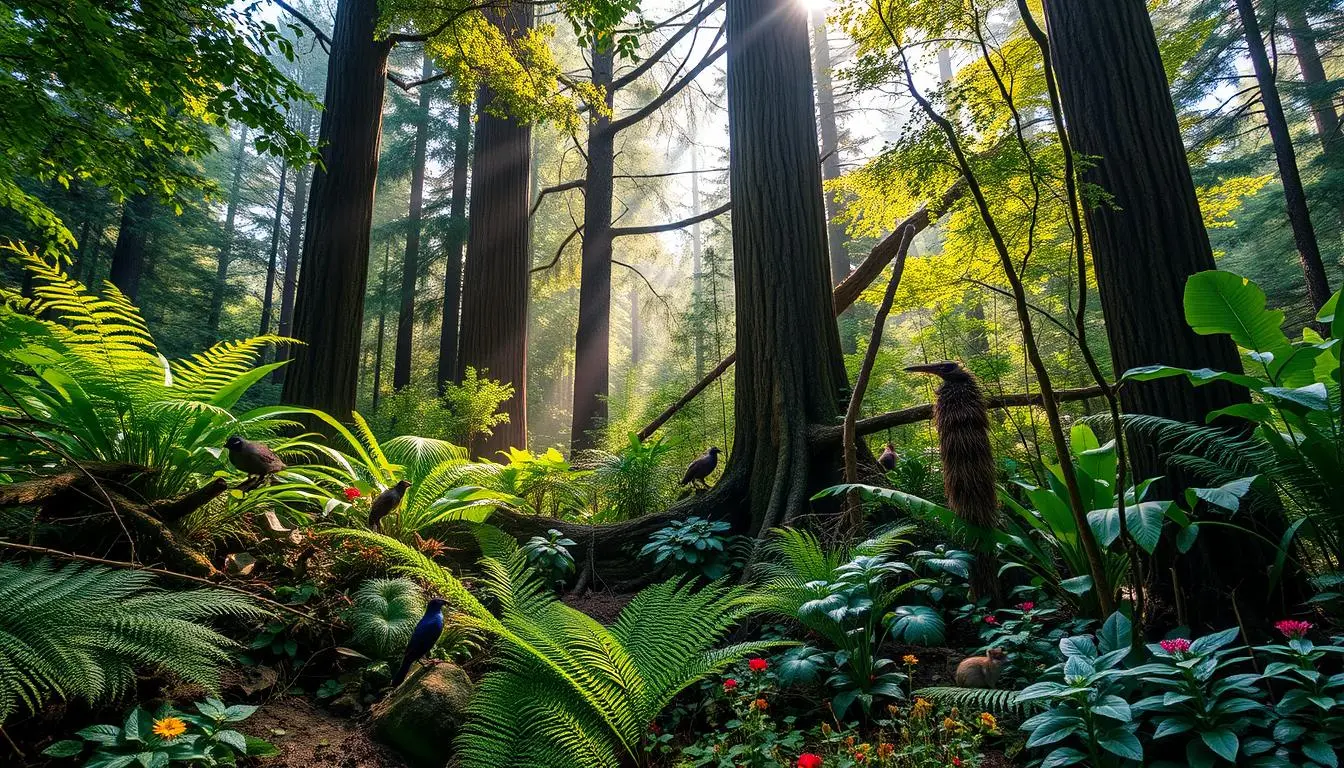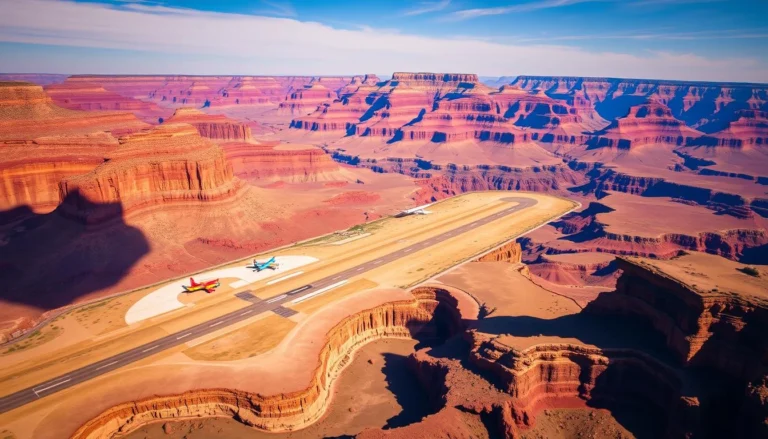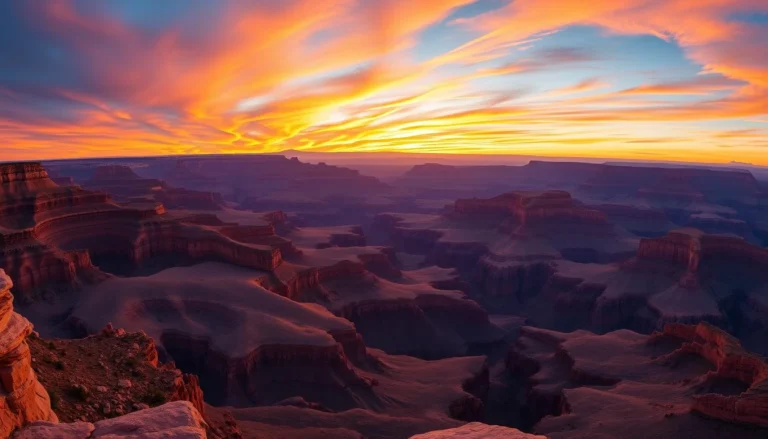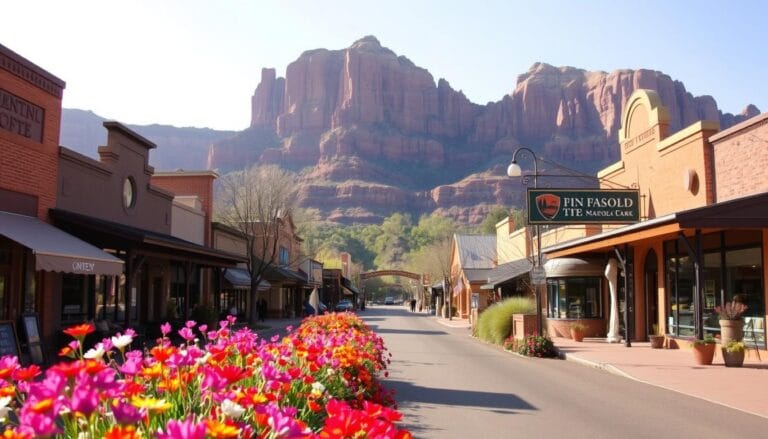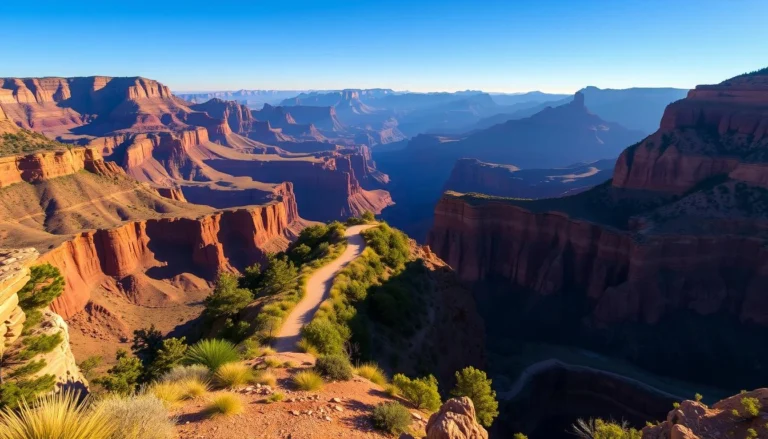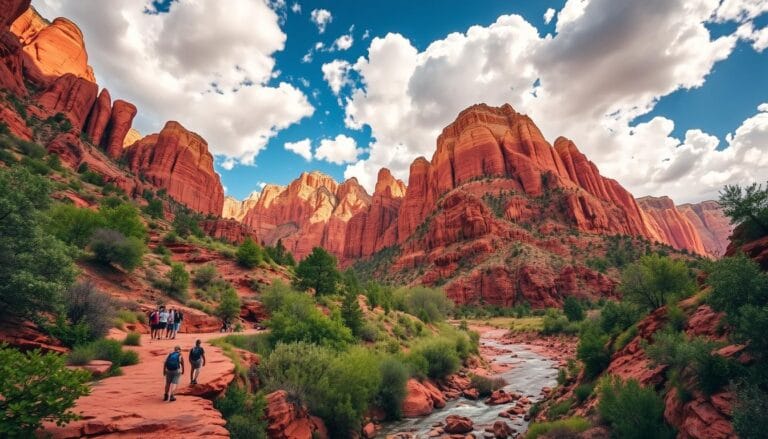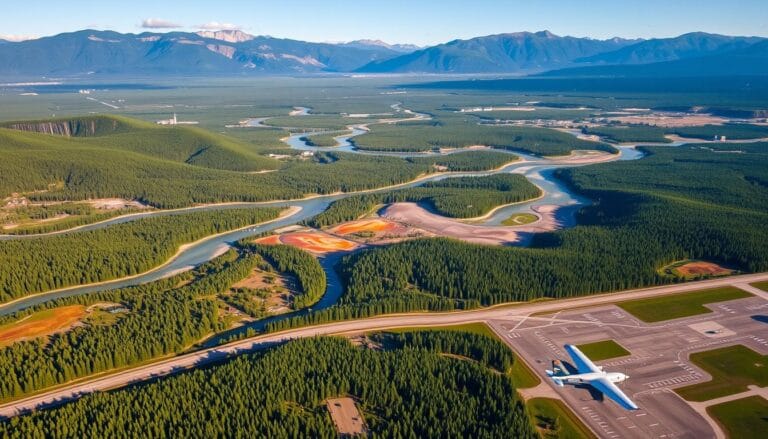Experience Woodlands National Park’s Natural Wonders
As you enter Woodlands National Park, you’ll feel a deep calm. This place where nature meets us is special. It’s full of tall trees and winding trails, showing nature’s strength.
Here, you’ll find many different plants and animals. They all help keep the park healthy. Woodlands National Park is great for hiking, seeing wildlife, and feeling connected to nature.
Key Takeaways
- Discover the untamed beauty of Woodlands National Park, a pristine wilderness area
- Immerse yourself in diverse ecosystems and witness the vibrant wildlife that call this park home
- Embark on invigorating hikes and outdoor adventures that will rejuvenate your spirit
- Explore the park’s rich history and conservation efforts, gaining a deeper appreciation for its significance
- Plan your visit to ensure you make the most of Woodlands National Park’s natural wonders
Discovering the Rich Heritage of Woodlands National Park
Woodlands National Park is more than a stunning natural area. It’s also filled with a deep cultural and historical background. Learn about the people and events that have shaped this amazing place over time.
Native American History in the Park
The Woodlands region has been home to many Native American tribes for thousands of years. Tribes like the Anishinaabe and the Haudenosaunee Confederacy have a strong bond with the land. Discover their cultural traditions, art, and stories that have been passed down through generations.
Historical Conservation Efforts
Woodlands National Park shows a long commitment to protecting the environment. In the late 19th century, conservationists worked hard to save the park’s wilderness. Learn about the key figures and groups that helped make Woodlands a national treasure.
Park’s Establishment Timeline
The journey to create Woodlands National Park was long and hard. From the first proposals to its official opening, see the key events that made it happen. Understand the challenges, political talks, and public support that made it a national park.
“Woodlands National Park is a living testament to the power of conservation and the enduring connection between people and the natural world.”
Exploring the park’s rich heritage helps visitors appreciate its cultural and historical value. This knowledge makes the visit more meaningful. It also encourages visitors to help protect this natural treasure for future generations.
Essential Guide to Park Trails and Hiking Routes
Woodlands National Park is a paradise for nature lovers. It has a wide range of nature trails through its green forests and beautiful views. Whether you’re an experienced hiker or new to outdoor adventures, there’s a trail for everyone.
The Wildflower Trail is a highlight of the park. It’s a moderate trail that shows off the park’s colorful flowers. As you walk the 5-mile loop, you’ll see many flowers and birds and butterflies.
If you’re up for a tough hike, try the Summit Trail. This challenging 8-mile trail leads to a summit with amazing views. It’s a great reward for those who make it to the top.
- The Lakeshore Trail is a peaceful 3-mile path along the park’s lake. It’s perfect for birdwatching and quiet moments.
- The Woodland Wanderer is a 2-mile loop for families. It takes you through different parts of the park, like forests and meadows.
| Trail Name | Difficulty | Distance | Notable Features |
| Wildflower Trail | Moderate | 5 miles | Vibrant wildflowers, bird and butterfly watching |
| Summit Trail | Strenuous | 8 miles | Panoramic views from the summit |
| Lakeshore Trail | Easy | 3 miles | Scenic lake views, birdwatching |
| Woodland Wanderer | Easy | 2 miles | Diverse ecosystems, family-friendly |
Every trail in Woodlands National Park is a journey into nature’s beauty. So, put on your hiking boots, bring your camera, and start exploring the park’s nature trails!
Wildlife Viewing Opportunities Throughout the Seasons
Woodlands National Park is a paradise for nature lovers. It’s home to a wide variety of wildlife all year round. Whether you love birds or want to see the park’s hidden creatures, each season brings new chances to see the park’s vibrant wildlife.
Best Times for Animal Spotting
The park’s animals are always on the move, but some times are better for seeing them. Spring is great for watching birds as they find homes and start families. Summer is full of insects, reptiles, and small mammals.
Fall is the time to see deer, elk, and black bears getting ready for winter. Winter is when you might see coyotes and bobcats’ tracks in the snow.
Common Species Guide
- White-tailed deer
- Black bear
- Bald eagle
- Pileated woodpecker
- Red-tailed hawk
- Eastern chipmunk
- Spotted salamander
Photography Tips for Wildlife
Getting great photos of the park’s animals is exciting. To do well, move slowly and quietly. Use a long lens to keep a safe distance and wait patiently. The best shots come from watching the forest ecology closely.
Also, try the park’s wildlife viewing platforms and blinds. They give you a great view without disturbing the animals.
Camping and Overnight Accommodations
Woodlands National Park has many camping and overnight options for everyone. You can choose from developed campgrounds or peaceful backcountry sites. The park is perfect for your camping and outdoor recreation adventures.
Developed Campgrounds
The park’s developed campgrounds offer easy access to amenities. You’ll find level tent pads, picnic tables, and fire rings. There are also restrooms and drinking water nearby. It’s a good idea to book ahead, especially when it’s busy.
Backcountry Camping
For a deeper connection with nature, try the park’s backcountry campsites. These sites are only reachable by hiking. They offer a chance to enjoy the park’s quiet beauty. Remember, you need a permit and must follow leave-no-trace rules.
Nearby Lodging Alternatives
If you prefer something more luxurious, there are options outside the park. You can find cozy cabins and charming inns. They offer easy access to the park and more amenities.
| Camping Option | Amenities | Reservations |
| Developed Campgrounds | Tent pads, picnic tables, fire rings, restrooms, drinking water | Recommended, especially during peak seasons |
| Backcountry Campsites | Remote, off-grid experiences, no amenities | Permits required |
| Nearby Lodging | Cabins, inns, additional amenities and services | Availability varies by season and location |
Woodlands National Park has something for everyone. Whether you camp under the stars or prefer a cozy stay, the park has you covered. Plan ahead and book your stay to make your visit unforgettable.
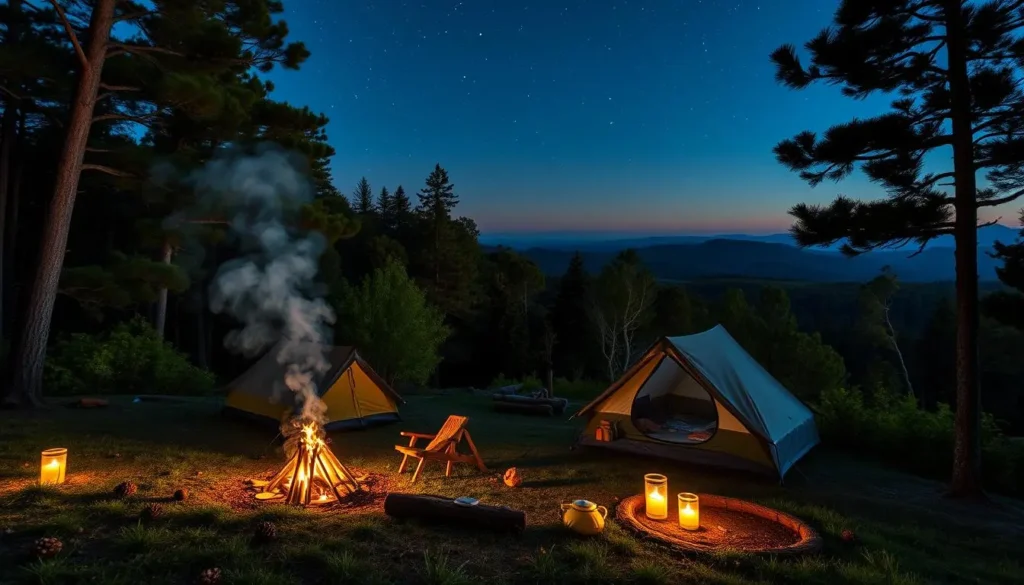
“The best memories are made outdoors, under the stars, gathered around a campfire.”
Scenic Landscapes and Photography Hotspots
Woodlands National Park is a paradise for nature lovers and photographers. It boasts stunning scenic landscapes and beautiful nature trails. These spots offer endless chances to take photos that will amaze everyone.
Sunrise and Sunset Viewing Points
Seeing the sunrise or sunset in the park is magical. Places like Sunset Ridge give you views that are hard to find anywhere else. Get there early to get the best spot and watch the sky turn into a colorful masterpiece.
Seasonal Landscape Changes
- Spring: See the park’s vibrant wildflowers and lush greenery.
- Summer: Enjoy the tall trees and clear streams along the nature trails.
- Fall: Be amazed by the autumn foliage that turns the park into a colorful wonderland.
- Winter: Experience the park’s serene, snow-covered views and peaceful landscapes.
Photography Tips for Landscapes
- Try different camera settings and angles to capture the park’s beauty.
- Pay attention to the light to change the mood of your photos.
- Take advantage of each season’s unique photo opportunities.
Woodlands National Park is a dream for photographers. It has plenty of scenic landscapes and nature trails to explore. Whether you’re experienced or just starting, this park is a must-see for outdoor beauty.
Understanding Forest Ecology and Conservation
Woodlands National Park is a haven for diverse forest ecosystems. Each one has its own captivating story. Explore the intricate web of forest ecology that thrives within the park’s boundaries. Here, native plant species and delicate ecological processes work in harmony to sustain this natural wonderland.
The park’s forests are a tapestry of old-growth deciduous trees. These include majestic oaks, maples, and birches. These towering giants provide essential habitats for a myriad of wildlife, from nesting birds to scurrying squirrels. Beneath the canopy, a vibrant understory of shrubs and wildflowers flourishes, each playing a vital role in the park’s conservation areas.
Ongoing efforts to preserve Woodlands National Park’s ecological integrity show the park’s commitment to environmental stewardship. Through innovative environmental education programs, visitors can learn about the delicate balance of these forest systems. They also learn the importance of responsible land management practices.
- Discover the diverse plant and animal species that call the park’s forests home
- Explore the intricate web of interdependence that sustains the park’s ecosystems
- Learn about the park’s conservation initiatives and how you can contribute to their success
By understanding the forest ecology of Woodlands National Park, visitors can gain a deeper appreciation for the natural wonders within its boundaries. Join us in celebrating and preserving these invaluable conservation areas for generations to come.
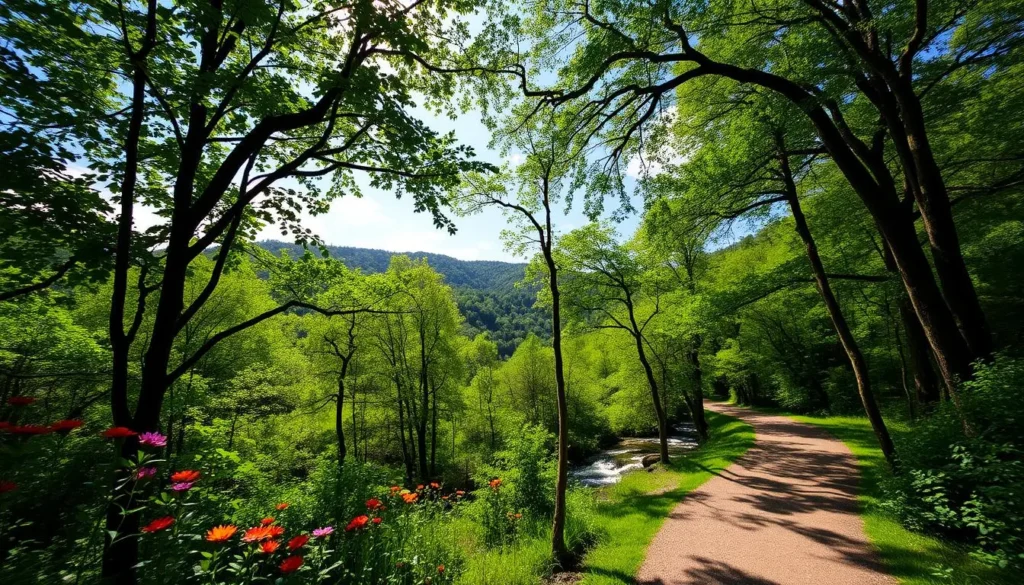
Seasonal Activities and Park Programs
Woodlands National Park is always buzzing with excitement, all year round. You can enjoy outdoor fun or learn about the environment.
Summer Recreation Options
Summer is the best time to see the park’s beauty. Go on guided hikes to learn about plants and animals. Or try canoeing or kayaking for a different view of the scenery.
Winter Activities Guide
Winter turns the park into a magical place. Try snowshoeing or cross-country skiing to explore the snow. Or, learn about the park’s ecology and conservation indoors.
Educational Programs Schedule
- Ranger-led nature walks and bird-watching tours
- Hands-on workshops on topics like wildlife tracking, wilderness survival, and environmental stewardship
- Guided explorations of the park’s historic sites and cultural heritage
- Seasonal events and festivals celebrating the natural wonders of Woodlands National Park
Woodlands National Park offers fun and learning for all. Dive into outdoor adventures and environmental education.
Planning Your Visit: Essential Information
Discover the wonders of Woodlands National Park by planning your trip well. This guide will help you enjoy your visit, whether you want adventure or peace. You’ll learn how to make the most of your time in this beautiful place.
Know the park’s hours and fees to have a smooth visit. You can get there by public transit or car. Don’t forget to bring the right clothes and a camera to capture the views and wildlife.
Respect the park’s nature by following outdoor recreation rules. Stay on paths, dispose of trash properly, and leave the area as you found it. With careful planning and respect for nature, you’ll enjoy Woodlands National Park while helping it stay beautiful for others to see.
FAQ
What are the top attractions and highlights of Woodlands National Park?
Woodlands National Park is full of natural wonders and outdoor fun. You can explore scenic hiking trails, see wildlife like deer and bears, and enjoy stunning views. There are also educational programs and guided tours to learn about the park’s ecology and conservation.
What wildlife can I expect to see in Woodlands National Park?
Woodlands National Park is home to many animals. You might see white-tailed deer, black bears, bald eagles, and migratory birds. River otters, beavers, and small mammals and reptiles can also be spotted. The best times for wildlife viewing are early morning and evening.
What types of overnight accommodations are available in the park?
Woodlands National Park has camping options for all. Developed campgrounds have amenities like fire pits and restrooms. Backcountry sites offer a rugged experience. Outside the park, there are lodges and hotels for a more comfortable stay.
What educational and interpretive programs are offered in the park?
Woodlands National Park offers educational programs. These include guided hikes, workshops, and presentations on ecology, Native American history, and conservation.
How can I help protect the natural resources of Woodlands National Park?
Visitors play a key role in protecting the park. Stay on trails, dispose of waste properly, and observe wildlife from a distance. Join volunteer programs or citizen science initiatives. Educate yourself and others about conservation.

